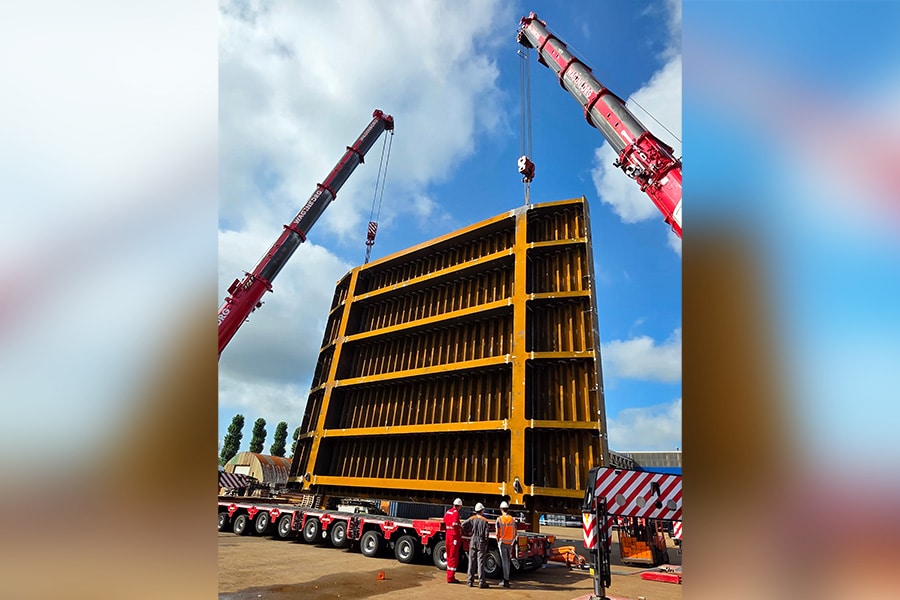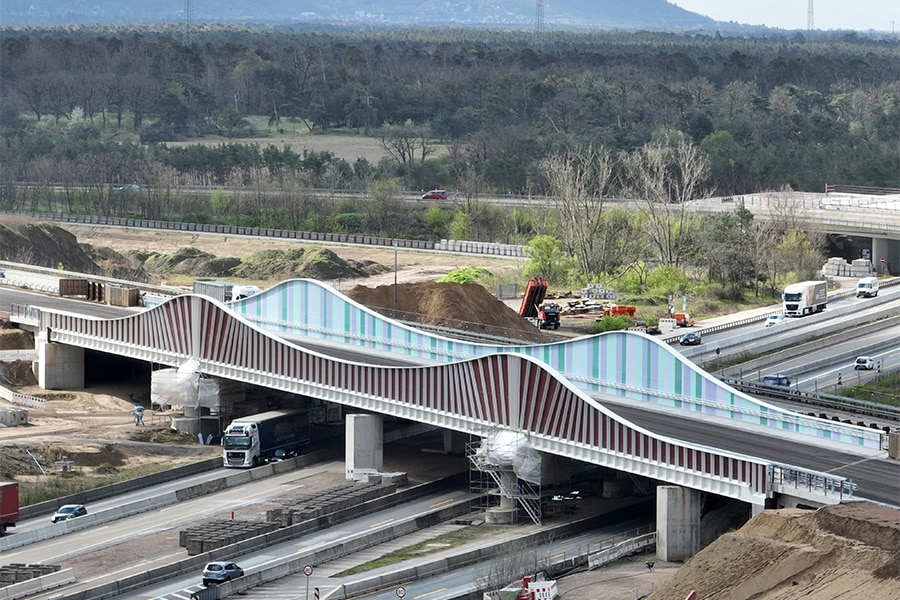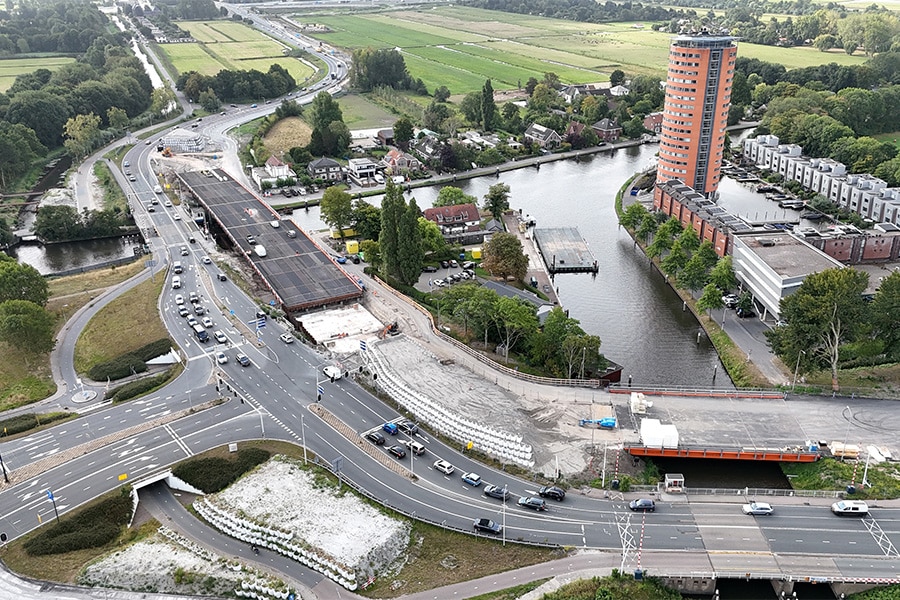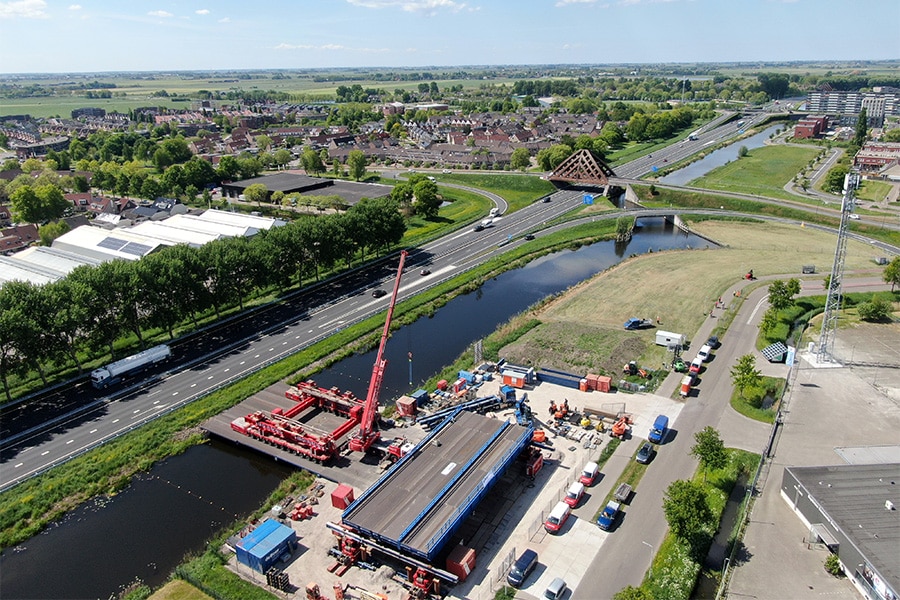
Proudly moving toward a model project!
On behalf of the Port of Rotterdam Authority, the Container Exchange Route (CER) is currently being constructed. This connects the container terminals, empty depots, distribution companies and Customs on the Maasvlakte. This bundles container flows in one location and eliminates the need for trains, barges and feeder ships to go to different terminals. One of the factors that makes a project successful is good cooperation. The construction of the Container Exchange Route is a good example of this.
Michiel Goosens, contract manager Port of Rotterdam, calls it a unique project. "The CER increases the service level of the Port of Rotterdam, making it even more interesting to transport containers through Rotterdam." It involves a runway of about 14 km in length that is designed to be robust and durable, because 99% availability must be guaranteed for the next 40 years. Therefore, the runway has a construction of fully reinforced concrete and is thus prepared for very heavy transport. "Three structures are also being built, including the largest in the Port of Rotterdam," adds Dick van Erkel, project manager at KWS Infra Zwijndrecht.
Signing of the agreement took place on March 22, 2018, after which the design phase followed. Realization started on April 1, 2019, and the work should be completed by the end of 2020.
Unique collaboration
What further makes the project so special is the cooperation between the client and the contractor. The work is being carried out by Combination CER, which consists of VolkerWessels companies KWS and Van Hattum and Blankevoort. Already in the tender, cooperation was one of the EMVI criteria and every tendering contractor had to do an interview and assessment with the Port Authority.
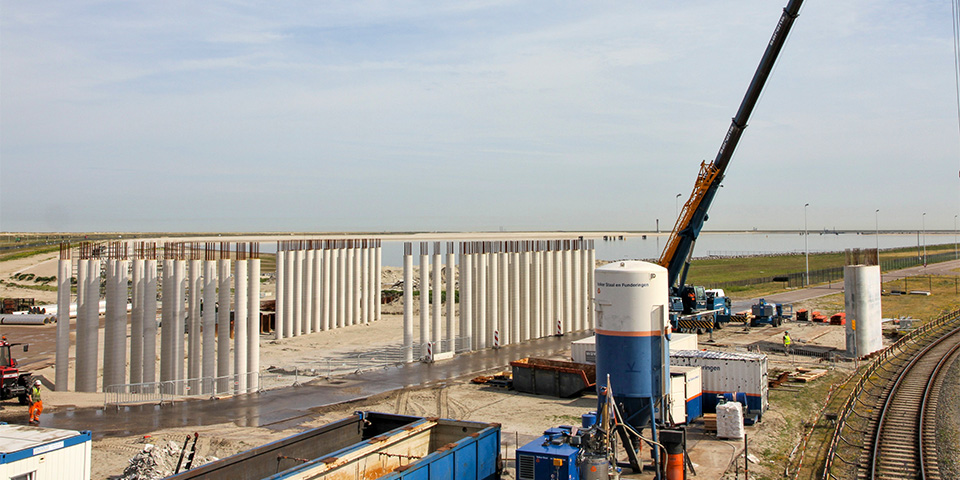
Work CER in full swing.
Behavioral Compass
At the start of the project, a startup led by an external party was held. An introduction where values and behavior were discussed in addition to the project itself. This resulted in a project-specific behavioral compass in which core values such as courage, reliability, respect and fun were agreed upon together. The conditions for meeting any challenge with each other and a testing framework within which to work together. "You have to make decisions, have courage, otherwise there is no progress," Van Erkel said. "Everyone on the team has to work with this behavioral compass," adds Goosens. "Likewise, the standard approach has been expanded to include focused interactions, a method of working together by resolving imperfections beforehand rather than afterwards."
Especially the chosen moment for the requirements interpretation sessions were remarkable, as there was no project design yet. Normally such a discussion takes place at a later stage, often under (too) much time pressure. Now it happened in a "comfortable" setting and things became clear early on.
Building cooperation
Farmer wisdom, forward thinking, expertise and social skills are important pillars for good cooperation. The same applies to the organizational and consultation structure. Goosens: "For each subject we have a consultation form (table), including informal consultation. Once every four weeks there is a progress meeting in which there are hardly any more discussion points, because they were already discussed in the informal consultations." Sometimes adjustments need to be made; the escalation model serves that purpose. "It is important to discuss matters with each other in good time, so that they do not escalate beyond the 'project boundaries.' So far, we have always managed to resolve discussion points within two weeks, which has not resulted in any substantial delays," says a proud Van Erkel.
